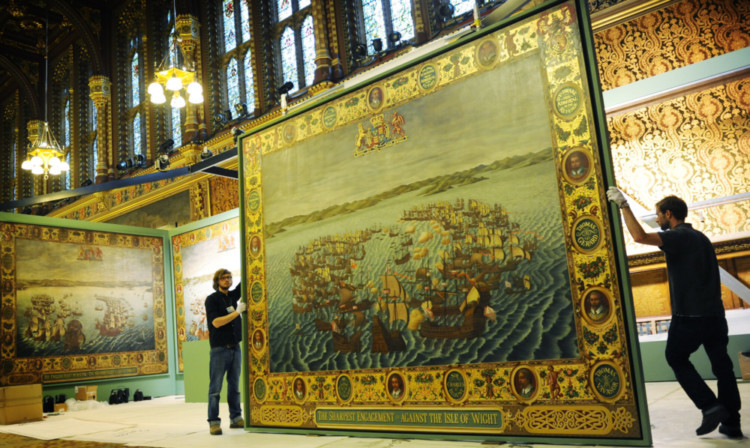
Peers have lavished more than £600,000 of taxpayers’ cash on art works for the House of Lords which the majority of the public will never see.
Included in the six-figure splurge was a painting called Fish Supper by artist Ffiona Lewis.
But critics last night rounded on the spend, insisting lavish Lords have had their chips now that the extent of their spending has been laid bare.
New figures obtained by The Sunday Post show exactly how much has been splashed out on paintings, furniture and sculptures for West-minster’s second chamber, while the vast majority of people have struggled to make ends meet.
A total of £615,095 has been spent since 2000 by an elite band of peers who are handed a £50,000 a year treasure trove budget by the UK Government to spend on art works which tickle their fancy.
The figures show that in 2011/12 just as sweeping public spending cutbacks were beginning to hammer families across the country the Lords were even handed an extra £135,000 to buy art for a new office block.
The haul of fine art includes a £34,000 oil painting of Augustus Henry Fitzroy, who was the third Duke of Grafton and a prime minister in the 18th Century.
The works also include one painting called Crazy Mixed Up Tree, which cost £10,000, and another, Fish Supper on French Blue, which was part of a six painting bundle costing £10,000.
A spokesman for the House of Lords said the art works are on show to those who take public tours of the building, but SNP backbencher James Dornan MSP last night branded the figures “disgraceful”.
He said: “This just typifies the vanity and self-serving nature of the draconian Westminster system.
“It would be funny if it wasn’t so tragic. However, with a record numbers of people lining up to use food banks, thousands of people can’t afford a fish supper for their dinner never mind one that costs thousands of pounds on a canvas for wealthy Lords just to peer at.
“It doesn’t have to be this way and the referendum in September gives Scotland the chance to do things differently.
“One of the great benefits of independence is that Scottish taxpayers will no longer have to spend £50 million funding the undemocratic Westminster system.”
The House of Lords collection has more than 8,000 works of art, but around a fifth are not on display. It is mainly made up of works from the 18th, 19th and 20th Centuries as well as some from the medieval age.
Figures released under freedom of information legislation show that £615,095 has been spent on art works by the House of Lords between 2000 and this year.
The art is paid for by an annual grant worth £50,000 a year from the Department of the Environment and the award can be rolled on to future years.
The highest amount spent in one year was £174,000 when the House of Lords opened a large new office block and they secured a one-off grant of £135,000 from the UK Government to help furnish it.
Among the works bought with this cash was a £7,500 portrait of Viscountess Rhondda by Alice Mary Burton and a £25,200 House of Lords silver centrepiece by Brett Payne.
The peers also spent £8,500 on a bust of Prince Philip and £5,000 on a water-colour by Robert Weir Allan of Queen Victoria’s Jubilee Procession on Whitehall.
Eben Wilson, director of campaign group Taxpayer Scotland, said: “This will really stick in the throats of most people. This is art work purchased by the public, but mainly for the private benefit of an unelected chamber.
“A private institution would have to pay for art out of its own resources and I don’t see why taxpayers should have to subsidise art works which they never get to see.”
All art purchases are decided by a 12-strong committee of peers, chaired by hereditary peer Lord Luke.
A House of Lords spokesman said: “Much like the art collection of the Scottish Parliament, the House of Lords art collection is a public collection which is on view to the public on tours of the Palace of Westminster. It can also be viewed online on the Parliament website.”

Enjoy the convenience of having The Sunday Post delivered as a digital ePaper straight to your smartphone, tablet or computer.
Subscribe for only £5.49 a month and enjoy all the benefits of the printed paper as a digital replica.
Subscribe